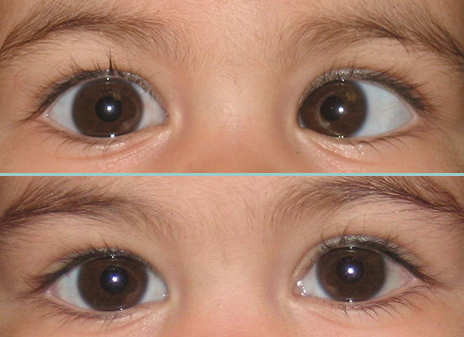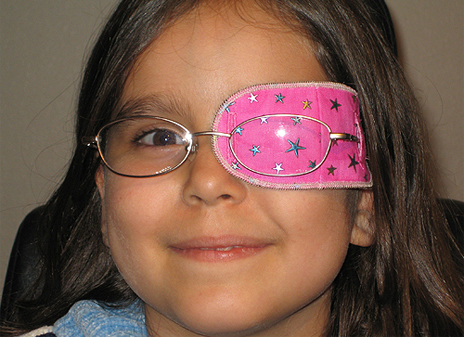What Does My Baby See?
by Scott Silverman, MD
Fellowship-trained Pediatric Ophthalmologist
It is important for a new mother to understand what to expect as their new baby’s vision develops. An infant’s visual system is immature and continues to develop throughout childhood. The cycle begins early in life, starting while in the womb and completing at age 10.
A baby begins to see during the first few months of life as the eyes and visual system mature. A newborn has poor vision and is unable to focus on objects, only seeing very big shapes and shadows. Their vision measures worse than 20/400, the biggest letter on an eye chart. By 3 months of age, objects the size of faces can be discerned by the baby’s eyes. A one-year-old can see shapes the size of large newspaper print. Children do not attain 20/20 vision until approximately 4 years of age.

Babies cannot fixate or track objects in their first 2 or 3 months of life due to their immature visual system; however, your baby should be able to fixate and track objects by 4 months of age. An infant’s visual system is also unable to keep their eyes straight early in life. Most infants’ eyes tend to drift outward. The eyes straighten as vision develops and infants begin to use their eyes together by 4 months. If your baby’s eyes are not straight by this time, they should be evaluated by a pediatric eye specialist.
Your baby’s eyes are growing and changing quickly from birth until early childhood.
The eye is about 1/3 the size of an adult eye at birth. The eyes complete 50 percent of their total growth during the first 6 months of life. The colored part of the eye, known as the iris, also develops during infancy. It is normal for eye color to change during your baby’s first year. Many Caucasian infants are born with blue eyes but they often change to brown or hazel as the color-bearing pigment cells develop. Babies reach their permanent eye color by one year of age. If you and your spouse both have blue eyes, your baby’s eyes will stay blue; otherwise, you cannot be sure of their eye color until one year of age. Babies with Hispanic, Asian and African American heritage usually have eyes that are dark brown at birth and do not change color.
Eye problems in infancy and childhood are often overlooked because a child will not complain about his/her eyes. Early recognition and treatment are the keys to preventing permanent visual impairment.

Warning signs of vision problems in infants:
* Crossed or turning out of the eyes at 4 months of age
* Inability to fixate or track objects by 4 months of age
* Constant tearing of the eyes or crusting of the eyelashes
* Whiteness in the center of the eyeball
* Droopy eyelid or one eye appearing larger than the other
* Family history of crossed or lazy eye
This article was written by Dr. Scott Silverman, our fellowship-trained Pediatric Ophthalmologist.
Dr. Silverman is available at our locations in Sarasota and Lakewood Ranch, Florida. He specializes in children’s eye care, strabismus, amblyopia (lazy eye) and eye muscle surgery in children and adults.
Your Child's Vision

Amblyopia
What is Lazy Eye? Vision problems are common in children. Early recognition and treatment are the keys to preventing permanent visual impairment.



